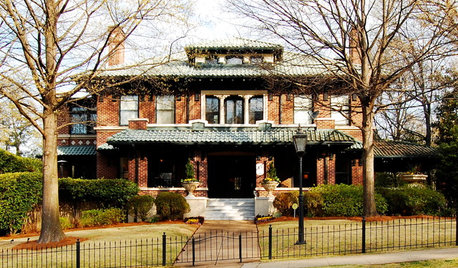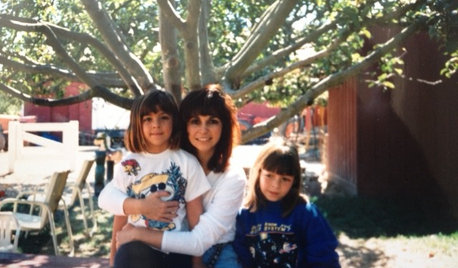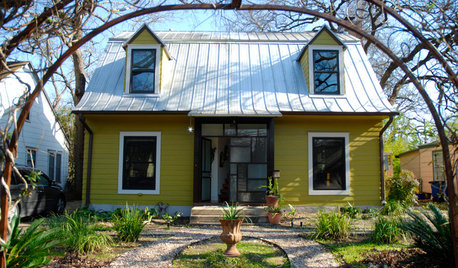Pixwell Gooseberry has lost some of its leaves
glenn_russell
15 years ago
Related Stories

HOUZZ TVHouzz TV: This Dream Midcentury Home in a Forest Even Has Its Own Train
Original wood ceilings, a cool layout and, yes, a quarter-scale train persuaded these homeowners to take a chance on a run-down property
Full Story
HOME TECHAll Is Not Lost: New Gadgets Help You Find Your Stuff
If you lose it when you lose things around the house (and who doesn't?), one of these wireless finders may be to your gain
Full Story
GREEN BUILDINGStudents’ Award-Winning Home Leaves Small Footprint
A cost-effective, solar-powered New Zealand prefab home has good looks to match
Full Story
REMODELING GUIDESOne Guy Found a $175,000 Comic in His Wall. What Has Your Home Hidden?
Have you found a treasure, large or small, when remodeling your house? We want to see it!
Full Story
ARCHITECTUREStates of Style: Alabama’s Icons Leave Their Mark
In the first of a new series, discover the natural beauty, the architectural icons and some of our favorite homes deep in the heart of Dixie
Full Story
LIFEHouzz Call: What Has Mom Taught You About Making a Home?
Whether your mother taught you to cook and clean or how to order takeout and let messes be, we'd like to hear about it
Full Story
FEEL-GOOD HOMEThe (Lost) Art of Laziness
Do you go to bed with to-do lists flashing through your head? Try one of these ideas to give yourself a break
Full Story
KIDS’ SPACESWho Says a Dining Room Has to Be a Dining Room?
Chucking the builder’s floor plan, a family reassigns rooms to work better for their needs
Full Story
HOUZZ TOURSMy Houzz: An Art-Filled Austin Home Has Something to Add
Can a 90-square-foot bump-out really make that much difference in livability? The family in this expanded Texas home says absolutely
Full Story
COLORS OF THE YEARPantone Has Spoken: Rosy and Serene Are In for 2016
For the first time, the company chooses two hues as co-colors of the year
Full StoryMore Discussions









jellyman
glenn_russellOriginal Author
Related Professionals
Norfolk Landscape Architects & Landscape Designers · Tomball Landscape Architects & Landscape Designers · Newcastle Landscape Architects & Landscape Designers · Mount Wilson Landscape Architects & Landscape Designers · Bloomington Landscape Contractors · Cockeysville Landscape Contractors · Danvers Landscape Contractors · Del Aire Landscape Contractors · Leicester Landscape Contractors · Mission Viejo Landscape Contractors · Santa Ana Landscape Contractors · Waltham Landscape Contractors · Golden Valley Landscape Contractors · Shenandoah Landscape Contractors · Vadnais Heights Landscape Contractorslucky_p
geo_7a
glenn_russellOriginal Author
glenn_russellOriginal Author
austransplant
glenn_russellOriginal Author
glenn_russellOriginal Author
Lena M
coolvol_comcast_net